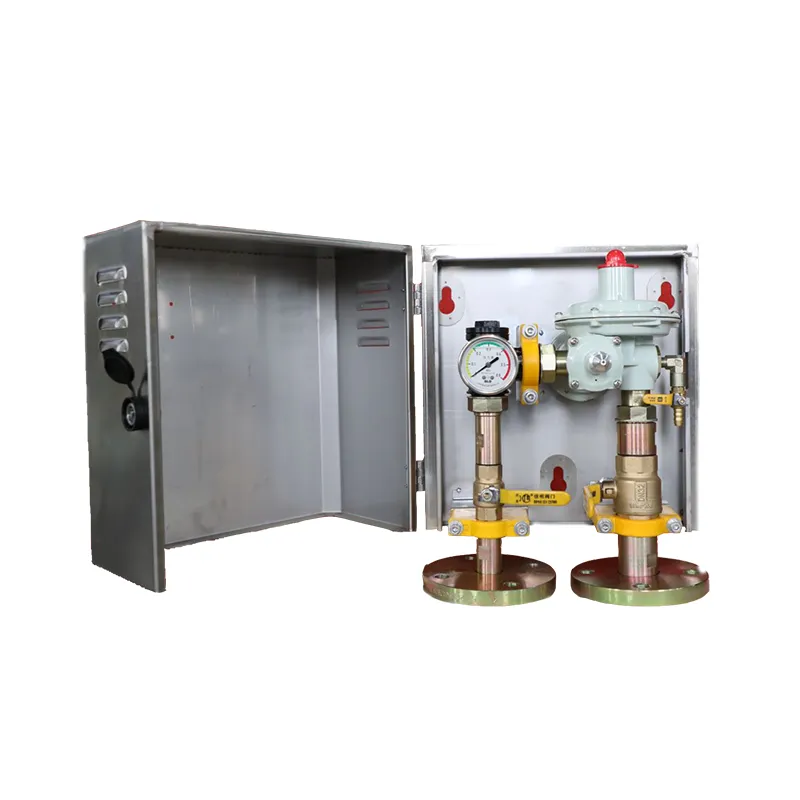
Oct . 21, 2024 13:34
Back to list
Design and Operation of Gas Pressure Regulation Stations for Efficient Energy Management
Gas Pressure Reducing Stations Ensuring Safe and Efficient Gas Distribution
Gas pressure reducing stations (PRDs) play a crucial role in the distribution of natural gas and other gases in various industries and residential areas. These facilities are specifically designed to reduce the high pressure of gas from transmission lines to a level appropriate for distribution, ensuring both safety and efficiency. Understanding the function, importance, and operational mechanisms of gas pressure reducing stations is essential for anyone involved in the energy sector.
Functionality of Gas Pressure Reducing Stations
The primary function of a gas pressure reducing station is to manage the pressure of the gas as it moves from high-pressure pipelines to lower-pressure distribution systems. When natural gas is transported over long distances, it is pressurized to facilitate its movement through pipelines. However, once it reaches the vicinity of end-users or local distribution networks, this high pressure needs to be reduced to safe and usable levels.
A typical gas pressure reducing station employs various components, including pressure regulators, valves, filters, and sometimes heating elements. The system begins with the incoming high-pressure gas, which passes through pressure regulators that gradually reduce the pressure to the desired level. Valves are used to control the flow and ensure that pressure fluctuations are managed efficiently. Filters are employed to remove any debris or moisture that could harm downstream equipment or end-user appliances.
Importance of Gas Pressure Reducing Stations
The significance of gas pressure reducing stations extends beyond simply regulating gas pressure. They are essential for safety, efficiency, and reliability in gas distribution systems. High-pressure gas can pose severe risks, including explosions and equipment damages, if not handled properly. Therefore, effective pressure reduction is critical for preventing accidents and ensuring the safety of consumers and workers alike.
gas pressure reducing station

In addition to safety, PRDs contribute to the efficient operation of the gas distribution system. By maintaining consistent pressure levels, these stations help ensure that gas appliances function optimally. This consistency is vital for both residential users, who rely on natural gas for heating and cooking, and industrial users, who utilize gas for various manufacturing processes.
Moreover, by ensuring the reliability of gas supply, pressure reducing stations are integral to energy security. They help maintain the stability of the gas supply chain, which is especially important during peak demand times or adverse weather conditions. Inadequate pressure management can lead to supply interruptions, affecting homes and businesses.
Operational Considerations
Operational efficiency of gas pressure reducing stations can be enhanced through regular maintenance and monitoring. Scheduled inspections and maintenance of regulators, valves, and filters are essential to maintaining optimal operation. Additionally, advancements in technology, such as real-time monitoring systems, allow operators to track pressure levels and flow rates, enabling proactive responses to any irregularities.
Operators also need to comply with various regulations and safety standards established by governmental and industry bodies. These regulations are designed to ensure that gas distribution systems operate safely and efficiently, minimizing environmental impacts and maximizing consumer protection.
Conclusion
Gas pressure reducing stations are a vital component of the gas distribution infrastructure, ensuring that natural gas is delivered safely and efficiently to end-users. Their role in regulating gas pressure is critical, preventing potential hazards and contributing to the overall reliability of the energy supply. As technology continues to advance, the efficiency and safety of gas pressure reducing stations will likely improve further, reinforcing their importance in the energy landscape. Understanding their function, importance, and operational considerations allows stakeholders to appreciate how these facilities contribute to a well-functioning gas distribution network.
Next:
Latest news
-
Safety Valve Spring-Loaded Design Overpressure ProtectionNewsJul.25,2025
-
Precision Voltage Regulator AC5 Accuracy Grade PerformanceNewsJul.25,2025
-
Natural Gas Pressure Regulating Skid Industrial Pipeline ApplicationsNewsJul.25,2025
-
Natural Gas Filter Stainless Steel Mesh Element DesignNewsJul.25,2025
-
Gas Pressure Regulator Valve Direct-Acting Spring-Loaded DesignNewsJul.25,2025
-
Decompression Equipment Multi-Stage Heat Exchange System DesignNewsJul.25,2025

